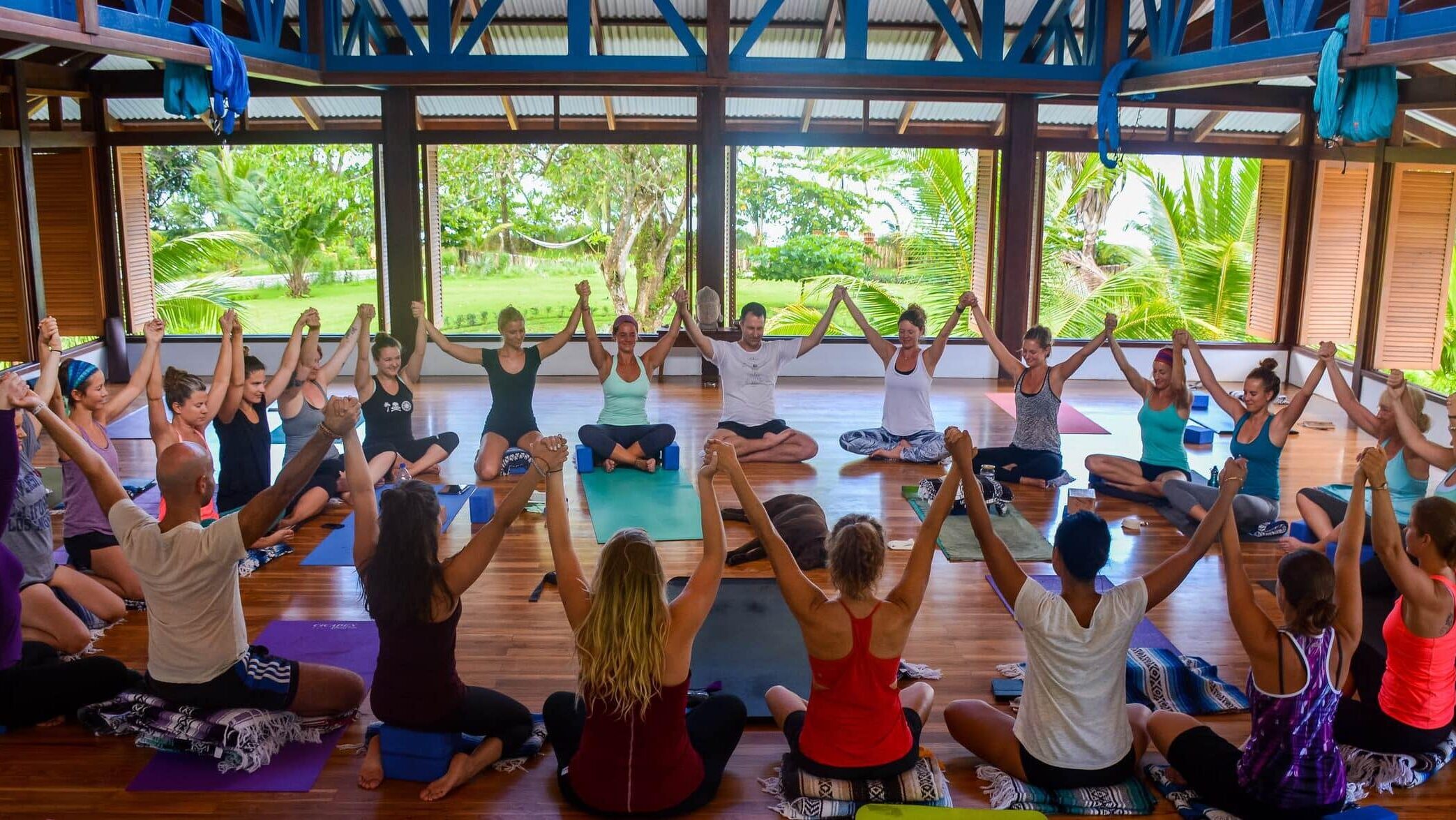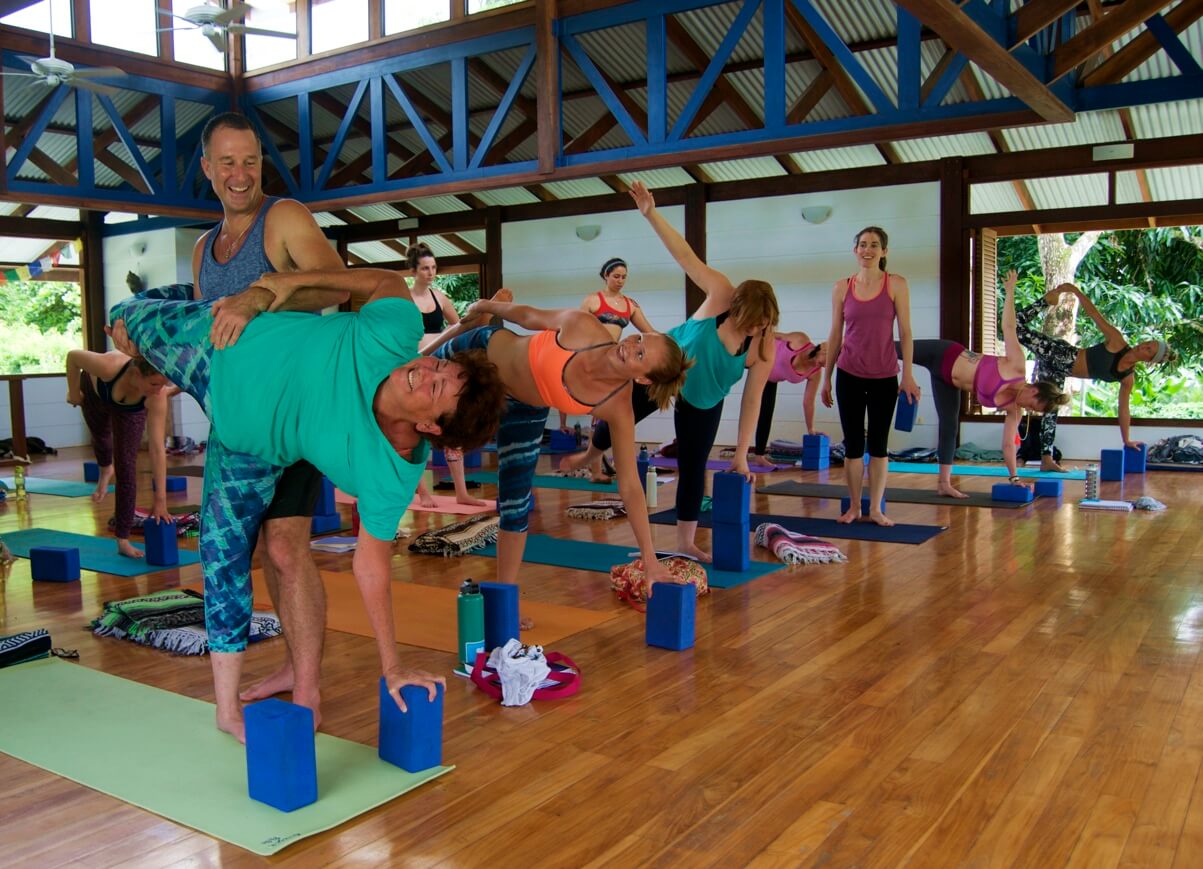We could probably dedicate an entire portion of a 200 hour training on self care for yoga teachers. After completing your yoga teacher training, you are excited and nervous to get out and teach!
As you run from studio to studio, teach last minute covers, write new lesson plans and practice your cues – it can very quickly become a huge energy drain.
When this happens, it’s hard to find a place to give from when you step into space as a leader and guide. That’s why it’s very important to have personal practices you incorporate into your life daily that will keep your mind inspired and your energy balanced.
Self Care for Yoga Teachers: How To Maintain Your Energy
No doubt, energy depletion is something that is very common with yoga teachers. The enthusiasm yoga teachers step out of their training with quickly diminishes after weeks and months of non-stop leading.
Not to mention, the continuous learning that teaching naturally comes with! It all takes up a lot. Here are a few of our favorite methods to sustaining your energy as a yoga teacher.
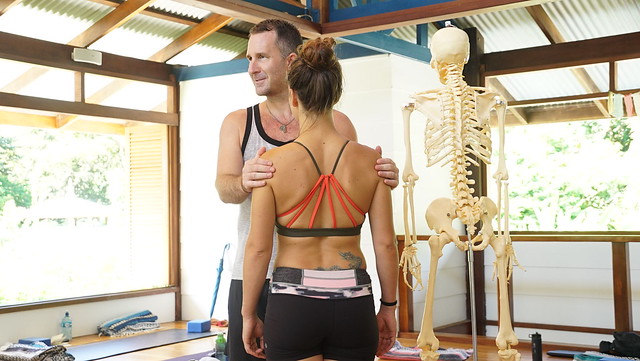
1. Understand Anatomy To Protect Your Energy
A 200-hour yoga teacher training incorporates about 10-20 hours of yoga anatomy. If you complete your training at Blue Osa, AYAMA™ is a significant part of the anatomy education. AYAMA uses muscle activation techniques to turn on the neurotransmitters between your muscles and your brains, preparing your body to hold you up in postures that require lots of strength.
How does anatomy have anything to do with conserving energy as a teacher? The answer to that question lies in energy anatomy: the subtle body. The subtle body is made up of the chakras, energy wheels within us that balance the flow of energy throughout our body, the nadis, which are energy channels, and emotions.
If you have a firm grasp on the subtle body, you have a foundation for knowing how to conserve and cleanse your energy in between classes and at the start and end of each day of teaching. This is a huge part of self care for yoga teachers.
Understanding the energetic exchange between your body and your students’ helps you use discernment for how you can hold space for yourself as well as others at the same time. There may be some moments you interact more with your students than others, and you’ll learn how to place boundaries.
2. Get Grounded Before And After Yoga Class
Self care yoga! It’s important to ground yourself before and after a yoga class so you can step in and out of the space with fresh energy. Before class, try spending 5-10 minutes in meditation, setting intentions for the class, and cleansing your energy of anything that may have happened that day.
You can incorporate crystals, affirmations, mantras, or other personal tools to support this exercise. After class, do the same thing! This will help seal the experience and offer an opportunity at self-reflection.
How did teaching feel? What did you find yourself thinking about? Were you judging yourself or your students, or were you simply observing? Were you giving yourself pauses to breathe and notice? Are there ways you can release expectations for yourself or your students that you may catch yourself holding on to during class?
Another great opportunity to always ground your class when you open. Invite students into their bodies and the space.
Some ideas might be:
- Meditation on breath awareness
- Pranayama practice e.g. 1:1 breath of the abdomen
- Hands in Anjali mudra and focus on an intention for the practice
- Asanas that focus on grounding and draw awareness to the feet, legs, and tailbone in the poses
3. Notice the Flow of Prana
Self-care for yoga teachers is something that can be cultivated by acting beyond the self. You might be nervous as a new teacher, but try to observe your students as they enter the studio. Make eye contact and welcome them in warmly. This is to develop your energetic sight.
Without judgment (like you are meditating), watch their body movements and how they interact with the space around them. Perhaps you will notice emotions, sensations or different types of thoughts arise inside you – it may reflect your client’s energy. Use your energetic sight to empower your relationship with your clients to inform you of their physical, emotional, and mental energy.
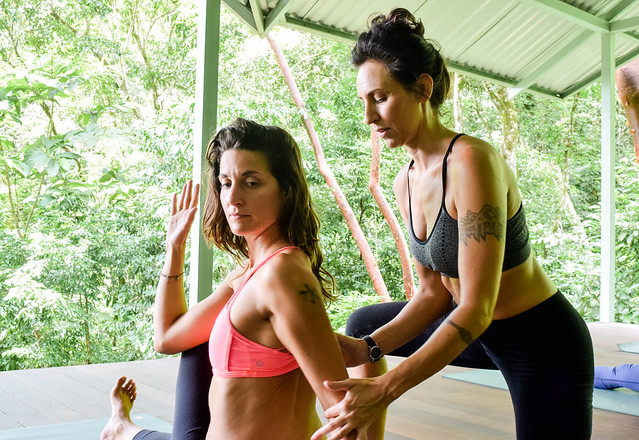
When you’re observing your students, take strong notice of how the prana flows through their bodies. Look at their breath – does it look like it moves through their body and into their auric field with ease? The breath is the easiest way to see the pranic flow in the body as it is the bridge of the physical, mental, and spiritual bodies.
- What is their posture like?
- How does their energy look?
- Do you feel a shift in the room or you as they enter?
4. Teach What You Love
When you teach what you love, you bring your essence and passion forth. Reflect on your own experiences in a yoga class.
Which ones stand out as particularly impactful? What about the teacher’s style stuck with you? Are you more inclined to thread philosophy into your classes, or do you think it would resonate with you more to take an anatomical approach? Teach what resonates most deeply with you. What is it that you hope your students will take away from your class?
Another way to practice self care for yoga teachers is to step into the class authentically. We’re different on different days. It’s important to offer your students consistency, but our energy levels aren’t the same all of the time.
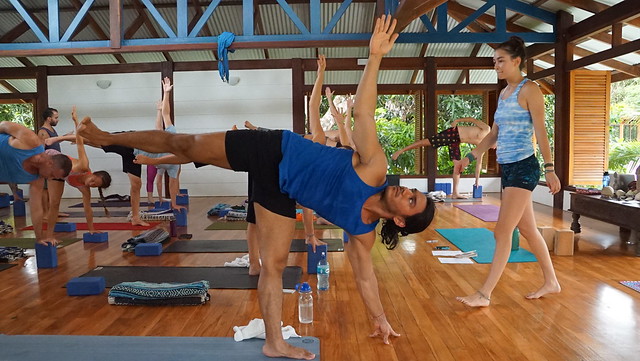
Maybe consistency comes from always teaching in a way that feels aligned to you in the moment. Release the attachment to having to be a certain way and say certain things. Your students will connect with you when you are bringing forth what is natural – the true you! That’s who your students show up for.
Something else that is helpful to consider is how you interact with others. Are you an extrovert or introvert or ambivert? How you identify as it pertains to your personality type will affect your energy exchange when you teach.
If you are an extrovert, then it is likely that you will enjoy the energy of teaching Group Yoga Classes
as the attention gives you energy. An introvert will likely prefer private clients as being with others can energetically drain an introvert. Start with what is natural and comfortable to you, then build towards the other to develop your teaching skills and confidence – if you wish!
An ambivert is in the middle of the spectrum. Your energy depends on the situation and people. You need to be more conscious to work this out. The secret is that if you feel calm you will be more energized than if somewhere/ someone makes you more nervous.
5. Stay Connected to Yourself
When identifying your own energy levels and staying grounded, it’s very important to check in with yourself. This sense of self-connectedness will keep you rooted in the messages you wish to bring to your students and help you provide them with a healing experience. Keep these 4 things in mind:
- Before you leave, know your energy that day. Then when you arrive at a new studio, scan how your energy feels. How does the lighting, sound, layout affect you? Do you feel judged by the studio manager and clients?
- Specific people can drain or energize you. Notice if there are certain clients that affect your energy – not everyone you attract should be your client!
- Allow sufficient recharge time before and after teaching classes that you find tiring and be mindful of your choices of what is true ‘rest’.
- Outside of teaching situations may exhaust you so allow time for re-energizing from these moments before you teach.
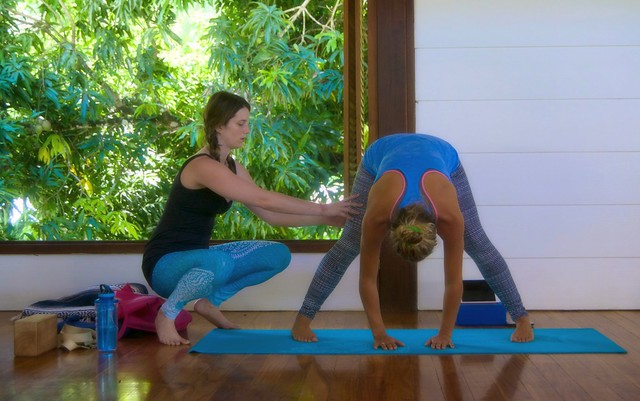
6. Don’t Neglect Your Self-Practice
When you step into the seat of the leader, it’s important to remember to create space and time for your personal practice. Devote yourself to self care for yoga teachers in your free time. Find classes where you can let yourself be held. Don’t lose this! This is the best way to learn how to be a better teacher and reconnect with our intentions as a teacher.
Yoga for self care and our personal practice has the potential to expose to us our deepest emotions, fears, triggers, desires, and highest potential. All of these answers are within us. To be able to bring this power forth, we have to consistently tap into it. Staying committed to your own practice doesn’t have to mean Asana. It will be different on different days, so be gentle with yourself and leave room for fluidity and flexibility.
Connected to your personal practice can be spending time each morning connecting to your subtle energetic body at each chakra and auric field. This is what YOU have for your day. Be mindful of this in your teaching. Settle into either your meditation seat or still lie in your bed. Notice the quality and amount of energy around your body. Be aware of the qualities this energy has and their quantity. There is no judgment in this.
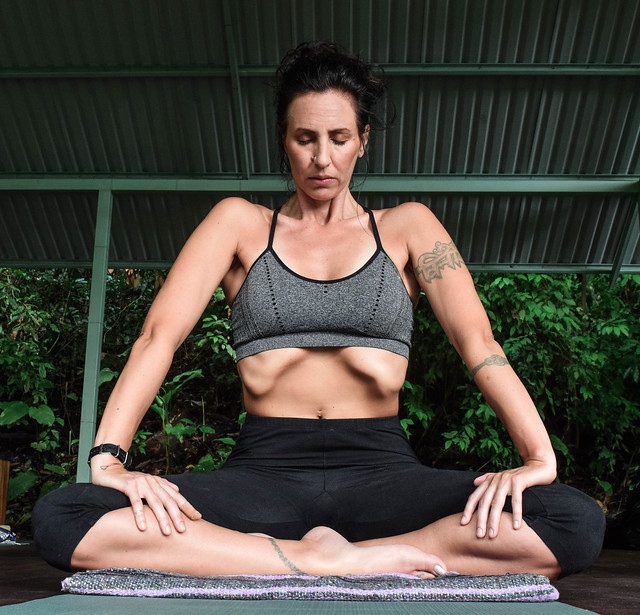
It can also be setting aside time for self reflection at the end of each day. This will help you assess your energy and any adjustments that you make. Your week is cumulative energetically so what looks acceptable for one day, maybe too much if you do not have enough rest time on the days either side. Often 5-15 minutes of meditation can be a fabulous reboot and transform your perspective!
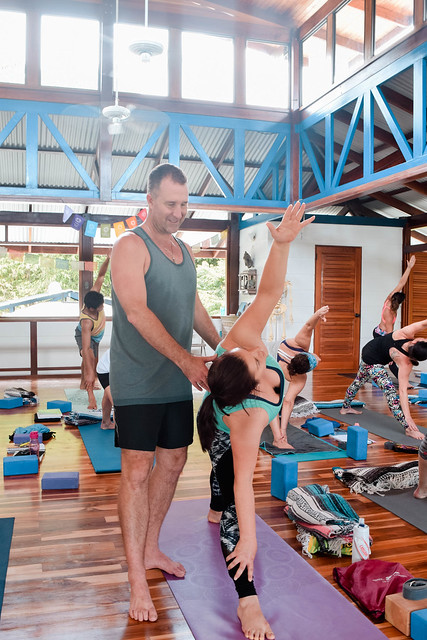
7. Eat Intuitively
What you consume will greatly affect what you bring outward. Eating colorful and vibrant food will keep you energized and feeling refreshed. This will shine through in your classes!
Don’t focus so much on all of the messaging the health and wellness industry feeds us about how to eat right. Be intuitive! Eat to make your body and mind feel good. You may find it really hard to walk into a class and teach for an hour after eating certain foods. Listen to your body and give it what it needs.
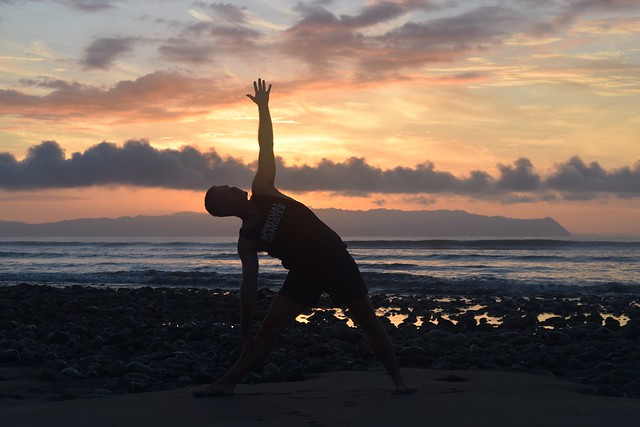
8. Rest Well
Getting good sleep and spending time in stillness will help you maintain your vitality as a teacher. It might be helpful to bring in Yoga Nidra as a part of your nightly routine. If that doesn’t feel right, perhaps you give yourself more time in the morning to sleep, or go to bed earlier – especially if you teach very early morning classes!
Taking an ayurveda quiz to figure out your dosha will also help you learn when is the best time for you to sleep and for how long. Ayurveda can be an amazing way to practice self care for yoga teachers and to figure out the disposition of your unique energy. It will help you pick out activities and rituals you can adopt to restore balance each day.
9. Enjoy movement beyond yoga
A well-rounded movement practice incorporates exercise that is not just yoga. It’s important to stimulate your mind in different ways and creatively establish a body-mind connection. Other kinds of movement will also support your yoga practice, so when you do come back to your mat, you’re strong and mobile.
Great examples are cycling, boxing, resistance training, martial arts, dance, rollerblading, swimming, or hiking. Allow yourself some space to experiment and do what is most fun!
10. Spend time in nature
It’s been scientifically proven that spending time in nature can sharpen cognition and decrease stress and anxiety. You may find rejuvenation by taking a walk or hike somewhere outside once or twice a week, visiting nearby bodies of water, or even simply doing your meditations outside on your balcony or backyard.
You might want to take your workout outside, too. Being outside will boost your mood and not to mention the benefits of Vitamin D and the immune system!
11. Find a community outside of the places you teach
Establishing a comfortable place in a community you love is a great way to incorporate self-care for yoga teachers outside of the spaces you teach in. Invest in a community that gets it! Yogi Aaron’s Yogi Club is a great place to do that. You’ll surround yourself with other teachers who support each other on their journey, deepen your knowledge base, and nurture your mind and spirit.

12. Enjoy your hobbies!
Self-care for yoga teachers includes doing what you love off of the mat. Visit the parts of yourself you knew before yoga came into your life, or perhaps you discover new things you like in your free time, too! A fun way to do this is to plan time each week and commit to feeling into the experience of joy. This will recenter and reorient you to the true nature of who you are, bringing you into deeper alignment to bring your best self into your yoga classes.
Is Being A Yoga Instructor Stressful?
You may be asking how do yoga teachers stay motivated? While yoga is something that leads us to quiet the mind and nervous system, as a teacher, it definitely has the potential to become stressful. It depends! Teaching classes every day can become overwhelming and it’s also a very energy-consuming job. Space holding is hard! Additionally, you never know when your personal life will throw you for a bit of a loop.
When you have things happening in the background, it’s normal to feel stressed stepping into a class. Focus isn’t always readily available and it doesn’t have to be. Be kind to yourself through your own process.
In conclusion
The journey will ebb and flow, but we know these practices of self care for yoga teachers will be helpful at one point or another. Above anything, stay dedicated to yourself. The rest will flow exactly as it’s meant to!
About the Author
Nid loves all her incarnations as an energy healer and coach, massage therapist, teacher of mind-body movement through yoga and Pilates, and blog writer. She is a passionate messenger on how to find your truth and live in alignment with your soul. Her work attracts people going through major life changes, long-term pain or health issues to discover how to live life with joy in mind, body, and spirit. She can be found working on retreats and online worldwide at http://www.omegamovement.org/.
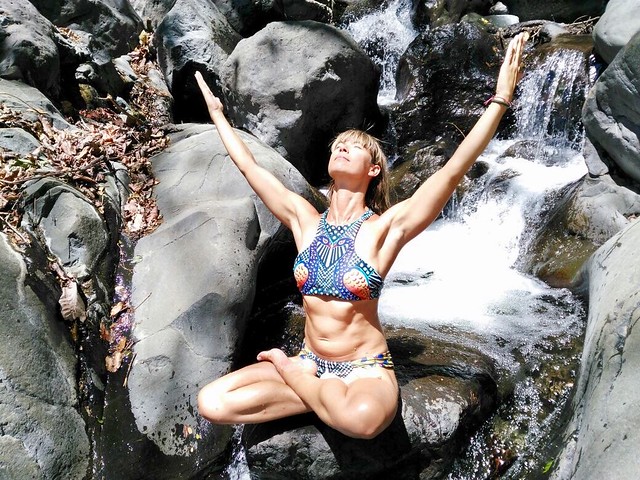
Tags: Yoga, yoga teacher training
Book/Inquire Now
Got pain? This will help you!
YOU DESERVE TO LIVE PAIN-FREE...
Receive 7 short, simple, and effective practices to alleviate knee, hip, low back, neck, shoulder pain, and more!
All you need is 5 minutes per lesson and it's FREE!
This revolutionary approach to yoga is new, and no one else is teaching this! Since I created Applied Yoga Anatomy + Muscle Activation™ and started teaching it consistently, I've witnessed students heal long-standing injuries, access yoga postures they never thought possible, and tell me over and over again how their body just feels better.
I hope you'll join me on this journey!
~Yogi Aaron
Is Yoga Teacher Training Right For Me?
We Created This FREE 5 Part Series So You Can Get All The Information To Make The Right Choice.
In this series, you will learn:
-
- Am I a candidate for yoga teacher training??
-
- What will I learn in a YTT?
-
- Do I need to have a perfect downward dog to attend YTT?
14-Day 200-Hour Yoga Teacher Training in Costa Rica
If you are looking for a 14-day 200 hour Yoga Teacher Training Costa Rica Immersion, you have landed in the right place. Join the next one!
300-Hour, 28-Day Yoga Teacher Training
Do You Feel Called To Something Greater?
This 300-Hour Yoga Teacher Training immersion training at Blue Osa will immerse you in yoga for one month.
You will have the specific transformational skills and yogic practices you need in order to connect with your higher purpose.
And more! You will be able to offer these transformative skills to others!





